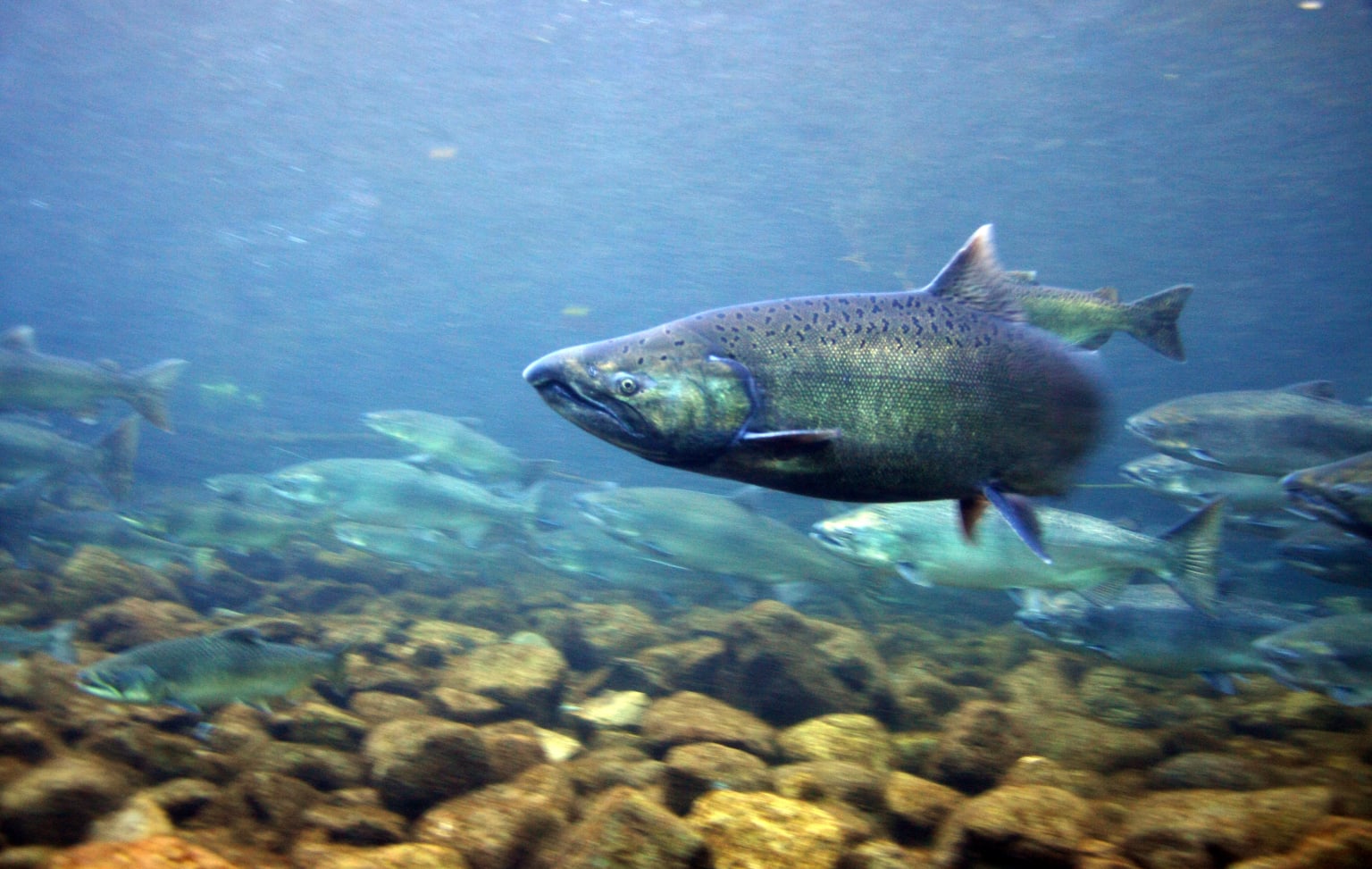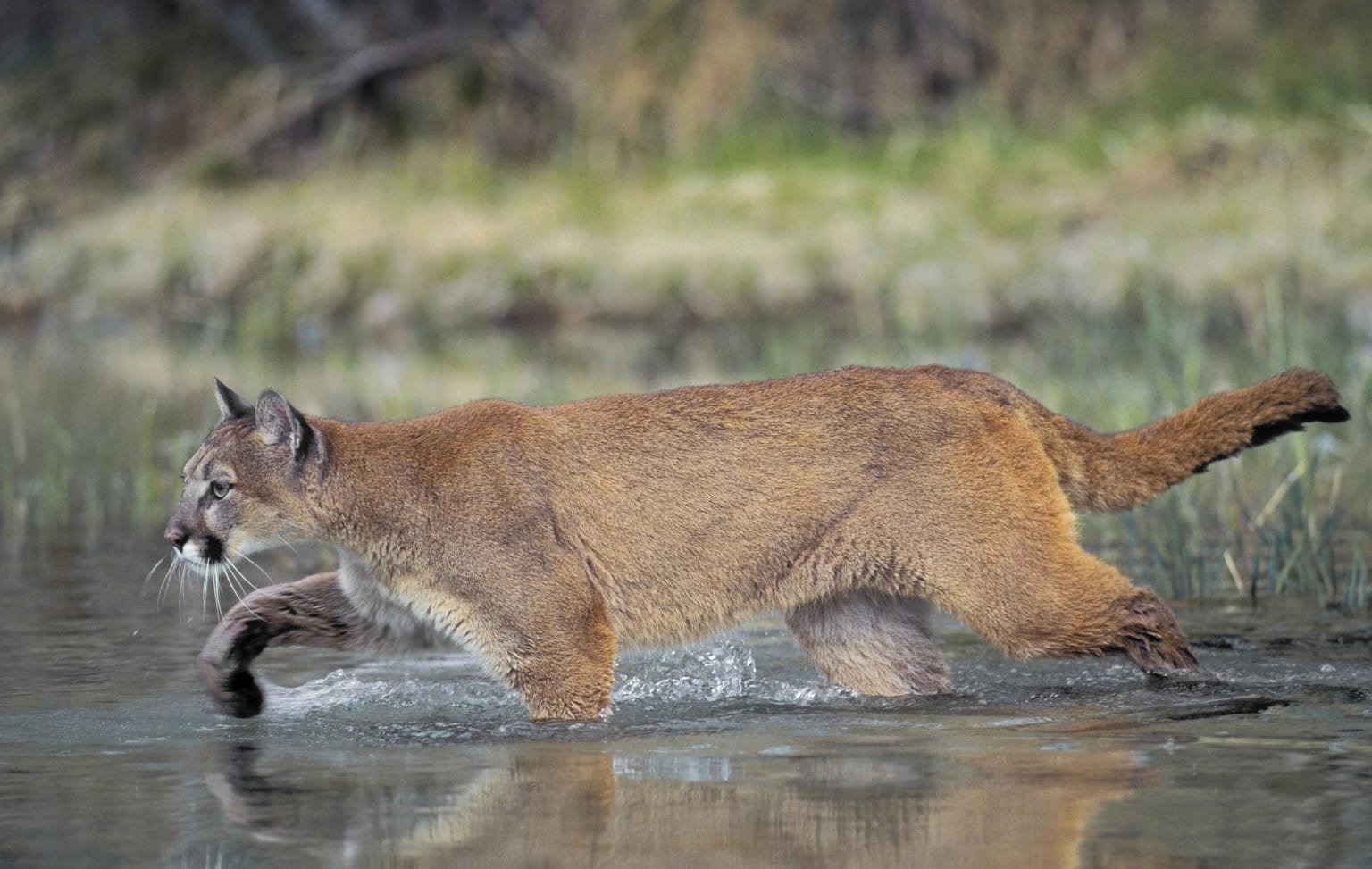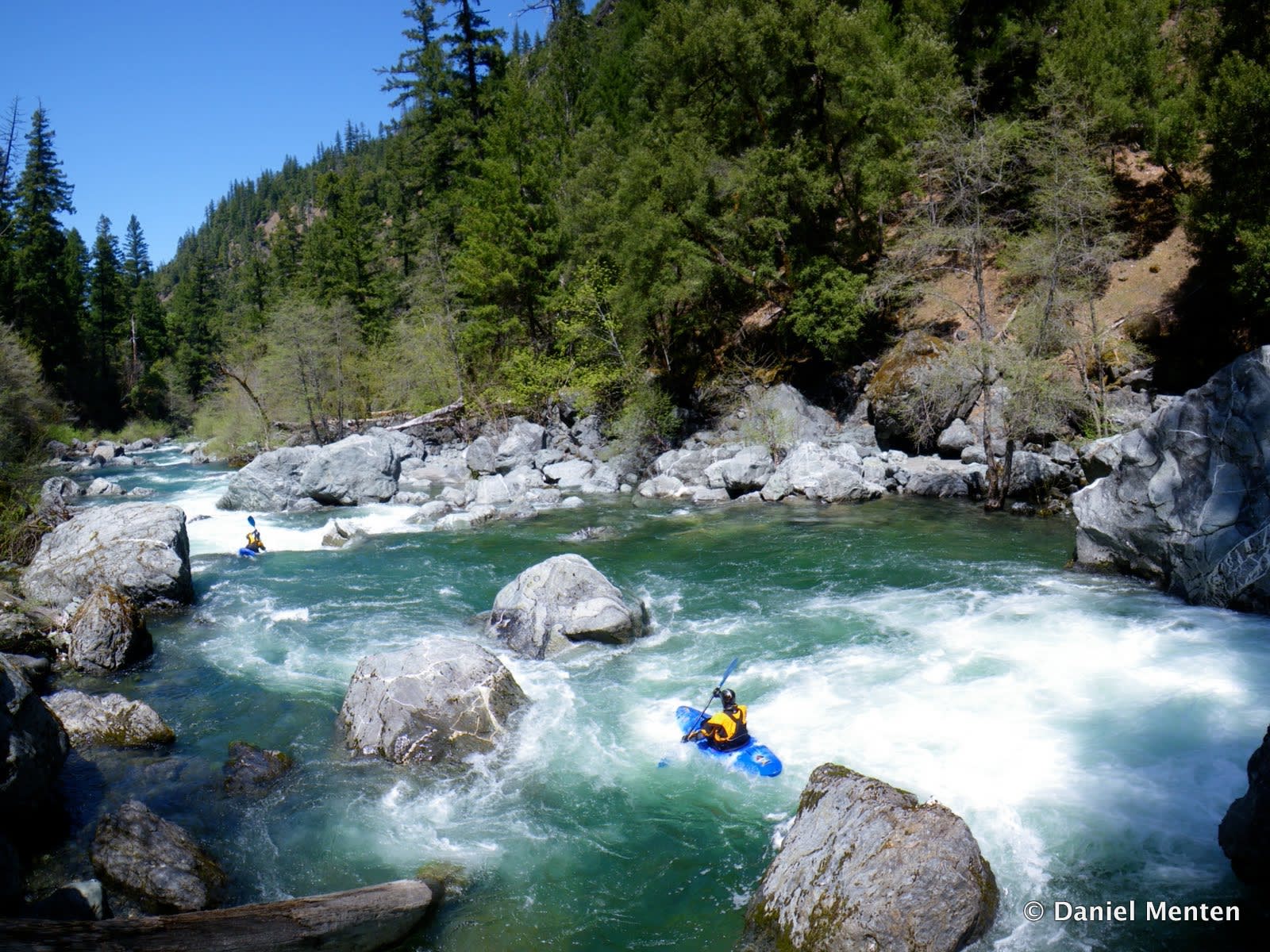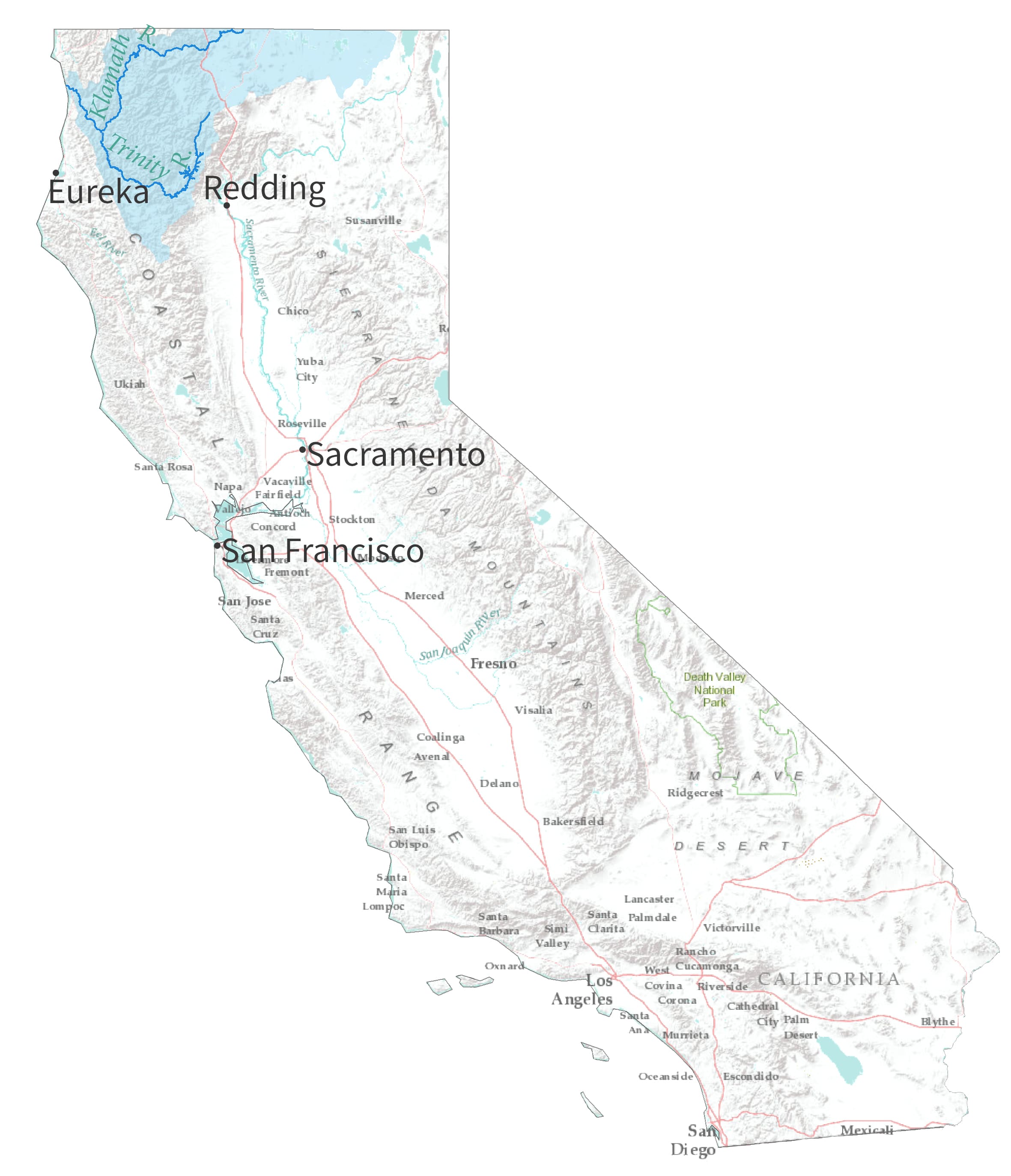
Fish
The Trinity is one of California’s finest steelhead rivers, with excellent runs on the North and South Forks, as well as the New River, another tributary. The South Fork harbors critically important runs of coho and Chinook, including one of only two remaining wild runs of spring Chinook in the Klamath Basin.

Wildlife
The Trinity winds through remote forests and wilderness that are home to mountain lion, deer, coyote, bobcat and other mammals. Along the river you may spot Pacific salamanders and California red-legged frogs (a threatened species), as well as river otters. Mature forests harbor endangered spotted owls.
-
Paddle
The main-stem Trinity is a rafter’s and kayaker’s playground, with Class III fun from Pigeon Point to Cedar Flat (Class V below this). On the South Fork, experienced boaters revel in the scenic Class-IV “Three Bears” run, starting below Big Slide Campground. Outfitters include Bigfoot Rafting and Trinity River Rafting.
-
Hike
The rugged, alpine paradise of the Trinity Alps is a bucket-list experience for many hikers, with wildflowers peaking in July and August. The South Fork National Recreational Trail traces remote, wild stretches of the South Fork for eight miles. Other trails abound within national forests and wilderness.
-
Fish
As California’s premier steelhead river, the Trinity offers the chance to hook these elusive sea-run rainbows in a spectacular setting. Anglers also chase Chinook and non-native brown trout. Drift boats are common, and a fly-fishing-only section lies a few miles below Lewiston Dam.
The WRC Story
The largest and wildest arm of the Trinity, the celebrated South Fork Trinity River once boasted incredible runs of native steelhead, Chinook and coho salmon, but logging, road-building and sedimentation have reduced wild fish returns. Today, the South Fork is still home to one of only two remaining native runs of spring Chinook in the Klamath basin, and is the subject of extensive restoration efforts. To bolster these efforts, Western Rivers Conservancy bought 170 acres along the river’s most productive spawning reach for steelhead and Chinook. In 2009, we conveyed this land to the surrounding Shasta-Trinity National Forest to prevent logging and landslides and help ensure clear, healthy waters for the Trinity’s imperiled fish.


Best Time of Year
- Salmon fishing
- Jun-Nov
- Steelhead fishing
- Sep-Feb
- Boating
- Year-round
- Hiking
- Jun-Oct


